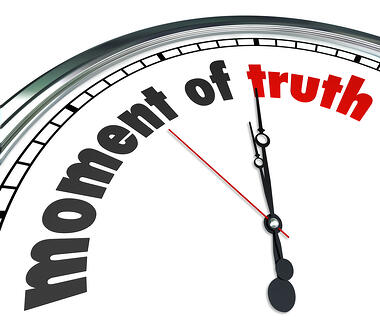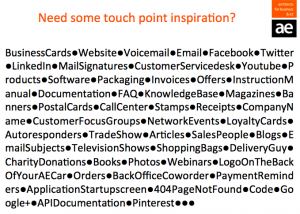In my previous post and related article, I explained how I believe customer journeys can be used to guide strategic investments. Customer journeys can help you find out where and how your organisation can improve the long term customer experience. Armed with that knowledge, you can then define the required change projects.
Take the journey viewpoint at all process levels
However, customer journeys are not just about getting a high level view on a process or life cycle that cuts through the offerings and touch points of different suppliers. They are just as much about putting yourself in your customer’s shoes. And you should do this at every step along the way. Let’s consider our travel experience once more. One of the end-to-end processes in this journey might be the selection and booking of the trip. It's a process that may take several days or weeks and consists of browsing and comparing vacations on the tour operator’s web site, visiting the travel agency where I get in depth advice and finally choosing and confirming my trip.

Also at this process level, customer journey viewpoints, like the customer heartbeat and the moments of truth, add very relevant information. They can show us how a seemingly small step in the process may significantly improve or degrade the customer’s experience, both in short and long term. For example: a cumbersome way of browsing possible hotels may lead me to leave one tour operator’s web site in favour of another: a clear short term impact. But if I decide to stay anyway and struggle my way through the web site, I may end up choosing and booking a second best hotel for my needs, because the web site was not able to capture my needs well and guide me in the best possible way. If I discover this later on, when the booking is irreversible, I will feel misled (“What? There is a better hotel at a lower price?”). This could heavily impact my loyalty as a customer.
Touch points and high value business moments
A good way to manage these points of interactions is by creating an overview of all touch points your organisation has. By then identifying when and how your customer interacts with them (or expects to interact with them), you get a better view on how to serve your customer well at every step. You can use these touch points to identify high value business moments: moments where you can really add customer value and capture value for your enterprise (now or later on in the journey).
Use touch points to identify high value business moments, creating value for both your customer and your enterprise. - Tweet thisIn today’s world, this not only means optimising each touch point by itself. You have to think about the omni-channel experience: I do some browsing om my mobile device during my commute (you now know which hotels I look at), continue on my laptop, at work during lunch (please don’t let me look up the same hotels again), discuss with my wife in the evening on our tablet (with whom I shared some hotels via your site), and call the travel agent close to my home the next day for some detailed information (they do know the hotels I’m interested in, right?). Oh, and I might actually visit another travel agent close to work for some brochures (but I’m in a hurry, so please don’t make me explain my situation again).
If you happen to think the number of touch points is limited, think again. My colleague Tom Devos quickly threw together the list above which we use as inspiration in work shops, and we’re sure you will find many more touch points if you think about them for a few minutes. Once you have your touch points combined with your customer’s expectations (the more strategic part: when and how will we serve which kind of customer), you can start thinking about implementation matters (I do not call them “details” on purpose).
So customer journeys and touch points are really two sides of the same coin. They can and should be used both as input in your strategy process and to guide your implementation. But don’t take my word for it: try it out, see what you learn, and feel free to share your experience.





